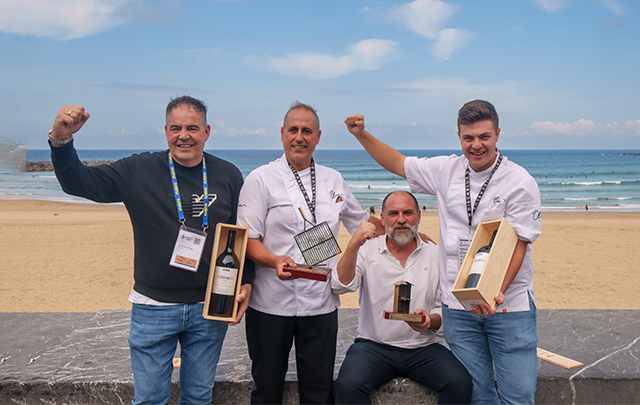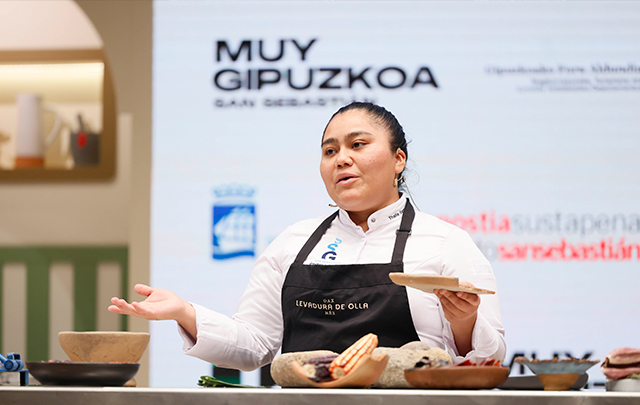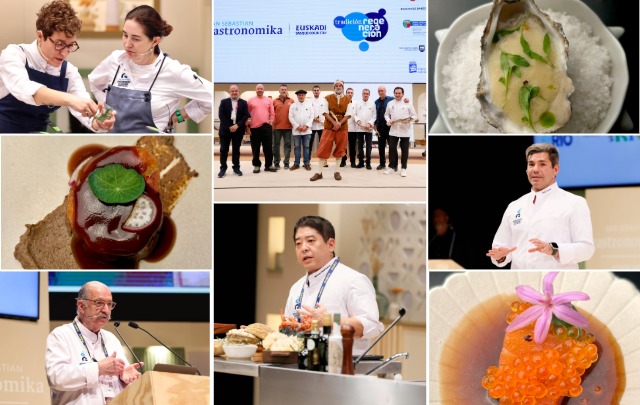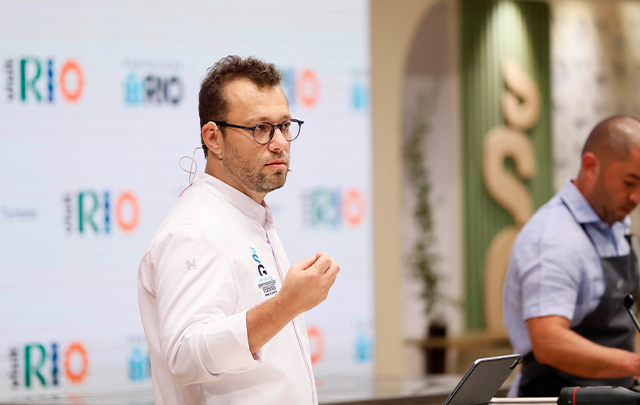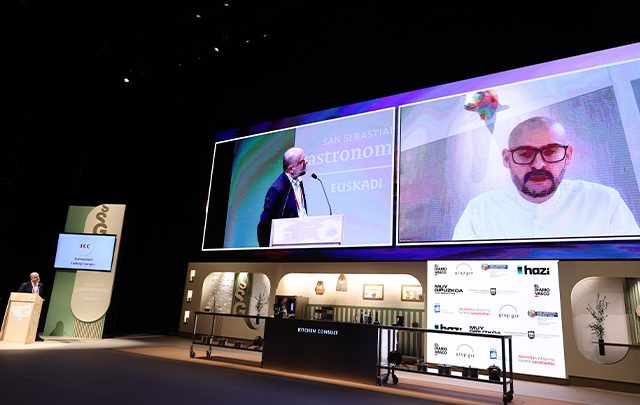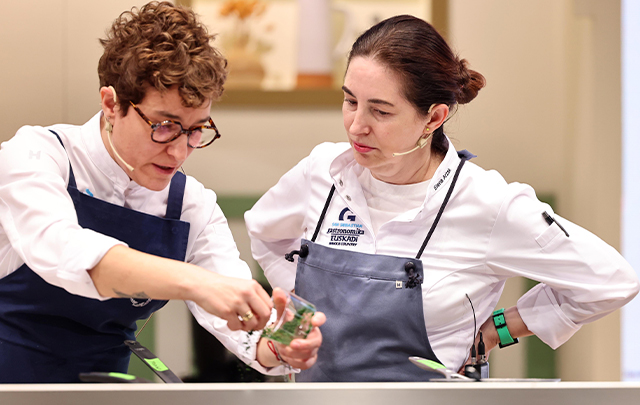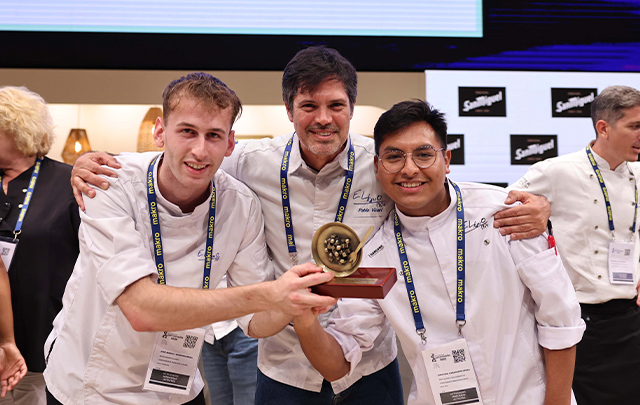News
Cooking up memories: three approaches to the region
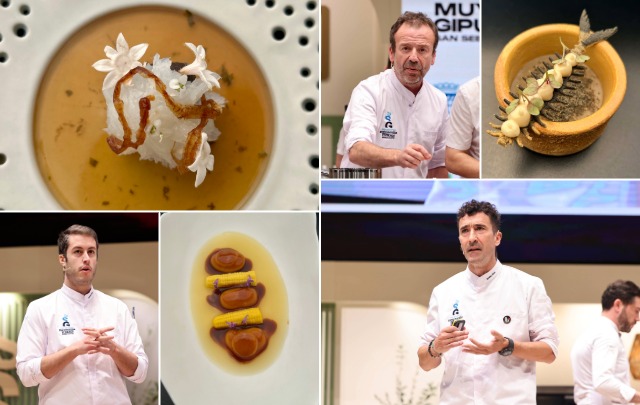
From Yecla to Larrabetzu, via Arriondas, on the first day of San Sebastian Gastronomika-Euskadi Basque Country, Alejandro Ibáñez, Nacho Manzano and Eneko Atxa engaged in a dialogue about origin, identity and time.
The morning session of the 27th edition of San Sebastian Gastronomika-Euskadi Basque Country featured contributions from the south, north and west. Three chefs, representing different culinary traditions (Ibáñez, Manzano and Atxa), gave presentations in which product, land and memory converge to create dishes that tell their story. It was an ode to roots, to the landscape, and to the emotion of continuing to cook one's own cuisine.
Alejandro Ibáñez, chef at the Barahonda restaurant in Yecla, Murcia, presented an ode to 'the environment and memory'. He claimed that 'wine is not only drunk, but also eaten', and that it is an integral part of the culinary landscape. He also said that every element of a dish, even those normally discarded, has value. Ibáñez emphasised the integral connection between his restaurant, its winery, vineyard and the soil where its grapes grow, as well as the importance of sourcing local produce. According to him, 'all chefs have a duty to understand the places where they eat and cook.' This is not just theory, but practice too, as his kitchen is literally integrated into a winery and he speaks proudly and responsibly of his 'Murcian produce'.
The menu presented by Ibáñez consists of three dishes, which he has stated are not intended to be served throughout the year. These dishes function as bites that narrate his philosophy. The first is an appetiser snack. It is a sandwich made with seasonal mushrooms, wine lees, local cheese and truffle grains. This aesthetic and earthy bite marks the moment when the promise of flavour and territory is fulfilled. The second dish transports us to the heart of the landscape. It is a delicately prepared eel, making use of the skin and bones, complemented by fig jam and a smoked emulsion with edible ash. Finally, a dessert that upholds the principle that 'everything is edible'. Toffee made from potato skins, Murcian goat's milk ice cream and caramel with wine lees reinforce the connection to the winery and the memory that shapes his approach to the culinary arts.
This tasting menu is not just an aesthetic exercise; it also makes the most of every part of the product. The skins, bones and less noble parts acquire functional and poetic value. Ibáñez insists that buying locally is not enough; we must understand it, extract everything it has to offer and make the invisible visible. This perspective thus transforms use into philosophy and elevates the Murcian product to the status of protagonist.
Finally, he expressed his excitement at being at Gastronomika for the first time, adding a personal touch to the professionalism on display. He emphasised the importance of gastronomy as a collective space for producers, chefs and diners, and the need to safeguard local identity. He also reminded us that haute cuisine owes a debt to the humble and the local. In short, it was an ode to the land, to what we see, taste and remember, and to what we often discard, yet which ultimately defines the character of a dish.
Cooking life
Nacho Manzano's (Casa Marcial***, Arriondas, Asturias) presentation was a celebration of identity and memory. Titled Cooking our life, the Asturian chef's tribute to his recently deceased patriarch, Marcial Manzano, recalled the origins of the restaurant, which opened in 1993, and the landscapes of his childhood. His speech interwove biographical memories with the flavours of the Cantabrian Sea and the aromas of forests and slaughterhouses, and the succession of dishes not only fed the audience, but also told a story: his own story, his family's story, and the story of an Asturias that cooks with soul and territory.
The five-course menu presented at San Sebastian Gastronomika was strongly connected to the land and evoked a wide emotional geography. The first dish, lobster with white nectarine gazpacho, combined the freshness of the Atlantic with the acidity of fruit, reflecting the chef's quest for the perfect flavour and maintaining the balance between salty and sweet. The second dish sees the river take centre stage, with trout wrapped in herb and moisture aromas that evoke the slow flow of water and the lush greenery of Asturias. This dish is a landscape in itself, a way of cooking memories linked to the land.
The third and fourth courses explore the world of earthy flavours. The first course features pork snouts with a green sauce and hints of bitterness, evoking the nostalgia of traditional slaughter, when 'St. Martin's Day smelled of black pudding and smoke' and cooking was just another November ritual. The next dish features wild boar, which is cooked to perfection, balancing power and delicacy. It is served with fabes, the traditional Asturian accompaniment to game, and a corn purée that adds sweetness and texture. The aesthetics of both dishes are as carefully considered as their flavour, with respect for the raw ingredients prevailing at all times. The result is cuisine that touches the earth without losing its elegance.
The finale arrives like an echo from the north in the form of bonito, the last protagonist of this culinary narrative. Manzano celebrates it just as the season comes to an end, 'when it is at its best', he says. It is accompanied by a garnish of tomato and spring onion petals in a simple yet traditional illustration. With this fifth dish, Casa Marcial condenses the spirit of its cuisine into a succession of edible memories and landscapes transformed into flavour. Each dish embodies the restaurant's motto of continuing to cook the life of a familiar place that still smells of sea, smoke and memory.
Time and roots
Eneko Atxa, the chef at the Azurmendi restaurant in Larrabetzu, Bizkaia, gave a presentation that revolved around a word that explains everything: time. Under this theme, the Basque chef offered a retrospective of his two decades at the helm of his restaurant, where Basque tradition and innovation come together naturally. “The past is essential,” he said, in reference to culinary heritage and the importance of doing things well without rushing, from the ground up. In his speech, time was not just a measure, but an attitude: that of someone who understands hard work and respects the cycles, quality and identity of a territory that speaks and cooks in Basque.
Atxa presented four dishes that encapsulate his philosophy, taking us on a journey from the sea to the countryside and from memory to the present. He began with Pelaio squid, cured and washed in txakoli, as a nod to the seafaring tradition and memory of his coast. Next came tempura-fried hake, light yet intense, served with charcoal-roasted pepper juice. The aroma of the grill acts as an invisible thread, linking the past and present of Basque cuisine. Each bite tells the story of the passage of time and of his two decades of perseverance in perfecting techniques that have never lost their roots.
The third course was one of the chef's most personal creations: sheep's milk curd with sweet milk jam and pure sheep's milk miso, combining sweetness, saltiness and depth to pay homage to the rural world that inspires his cuisine. Finally, the diner makes a porrulsada 'bloom' on the plate in a symbolic gesture that elevates the humble leek to the role of protagonist. Through this tribute to the primary sector, the chef reminds us of the importance of looking to the countryside and recognising the work of those who sustain gastronomy through agriculture.
“We do what we want to vindicate,” Atxa summed up with a smile, thus summarising his philosophy of cooking with freedom but with firm roots. His presentation was not just an exhibition; it was an intimate conversation with time, which at Azurmendi becomes a legacy. In every dish, every memory and every ingredient, you can sense that distinctive Basque flavour.



